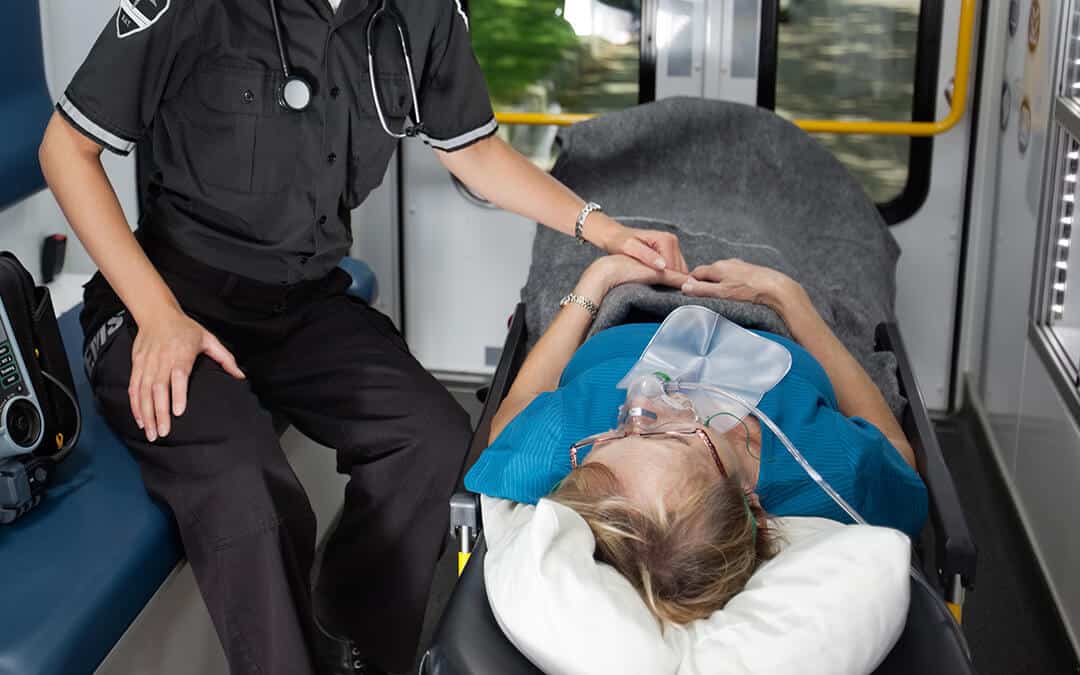It is a common scenario: A person suddenly collapses. A first aider rushes to the rescue, administering breathing or CPR. A bystander calls 911. Emergency medical service (EMS) providers rush in, administer oxygen, and whisk the patient away.
The World Health Organization lists oxygen as one of the world’s most essential medications. Some studies show that one-third of ambulance patients receive oxygen. Yet, the air we breathe is only 21% oxygen. So why is pure oxygen an essential component of emergency medical equipment?

The Skinny on Oxygen
Under normal conditions, a person breathes in about 21% oxygen, and the body consumes about 4%–5% of that oxygen. The rest is converted into carbon dioxide. Exhaled air contains about 16% oxygen. If you don’t have enough oxygen in your blood, it is called hypoxemia. If you don’t have enough oxygen in your tissues, it is called hypoxia. Both hypoxia and hypoxemia are very dangerous. When oxygen levels in the blood drop too low, a person might feel breathless or dizzy. When oxygen levels drop below 64%, people experience impaired mental1 function. When that number drops below 56%, most lose consciousness. In severe cases of hypoxia and hypoxemia, there can be rapid organ failure, tissue damage, and even death.
Too Much of a Good Thing?
What is the opposite of hypoxia and hypoxemia? Hyperoxia and hyperoxemia. But what’s the problem with too much oxygen? Too much oxygen in the blood and tissues can cause damage to the lungs and heart and a condition called oxygen toxicity that can even increase mortality.

So, When Should Oxygen Be Administered?
Recognizing that there are real dangers to both too much and too little oxygen, EMS providers need to follow some clearly established guidelines that ensure patient safety. There are emergency situations when a high concentration of oxygen is always or almost always required until the patient is stable. These cases include cardiac arrest, shock, sepsis, anaphylaxis, and carbon monoxide poisoning.
In emergency situations, patients with severe asthma attacks, pneumonia, and acute heart failure are very likely to need oxygen. The concentration of oxygen they need depends on the severity of their situation. Is there a best way for EMS personnel to determine if oxygen is needed? Yes! By monitoring oxygen saturation levels. The American Heart Association recommends that oxygen be provided when the patient saturation levels fall below 94%. When CPR is in progress, however, high-flow oxygen administration2 is recommended. Are there exceptions? In patients with pre-existing chronic obstructive airways disease, the recommended saturation level is quite a bit lower: 88-92%3. Once the patient hits the target saturation level, flow can be monitored to maintain oxygen saturation or discontinued if the patient stabilizes. Monitoring oxygen saturation guidelines allows EMS providers to safely administer this life-saving medication to patients en route to the hospital.
Learn more about CalOx’s oxygen for emergency medical services, or contact us today.
